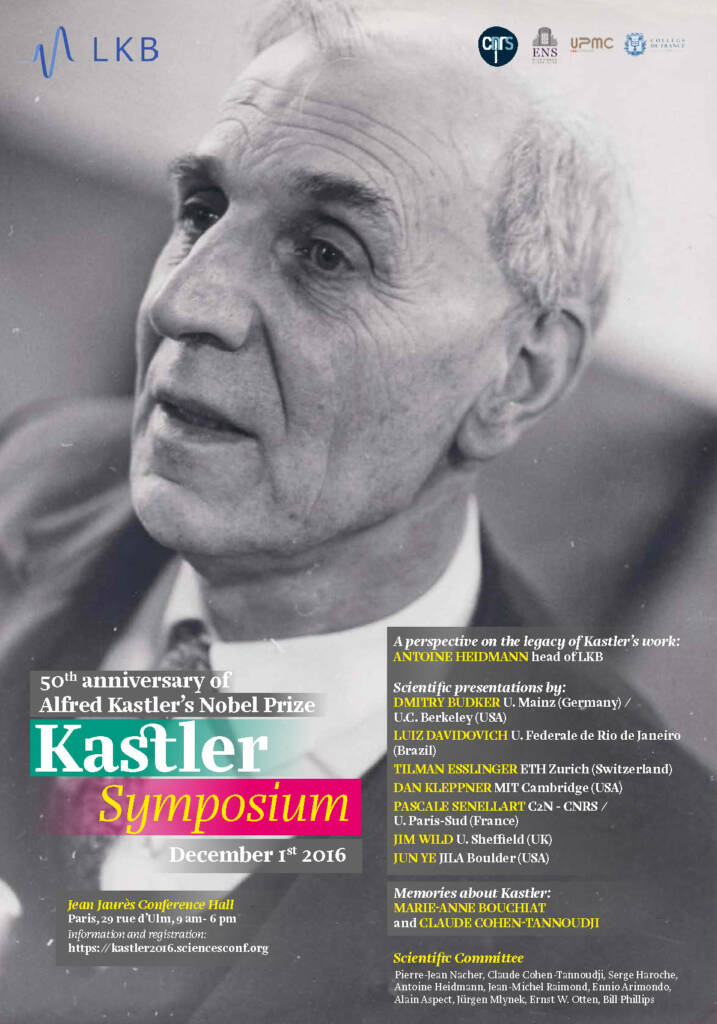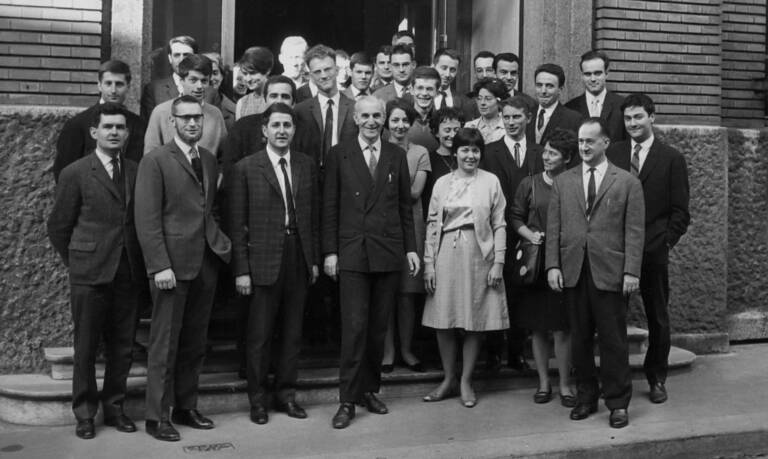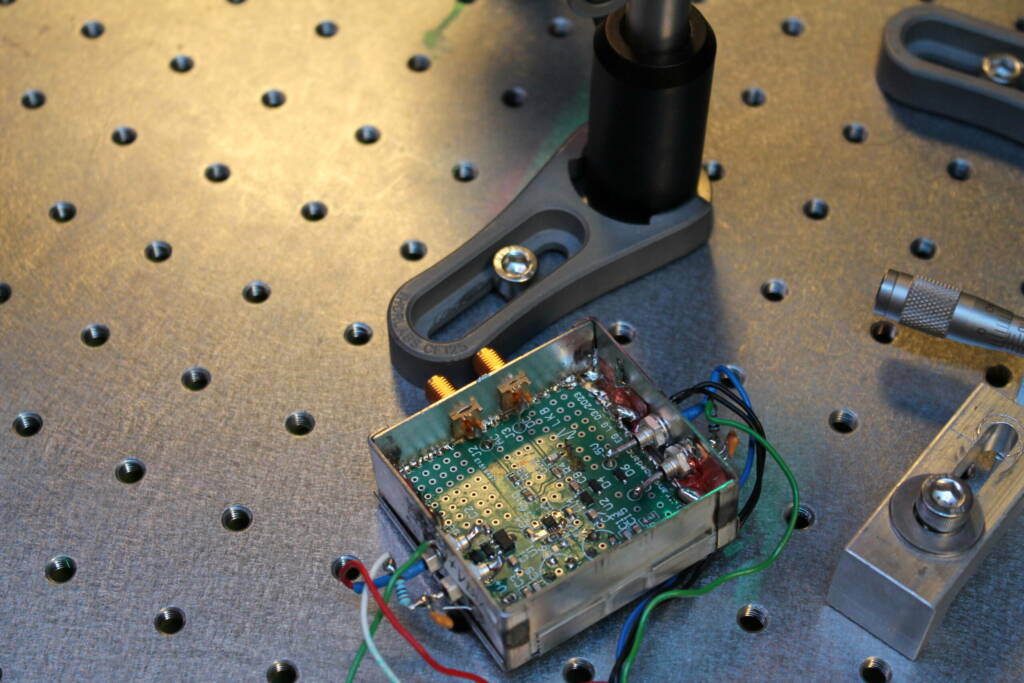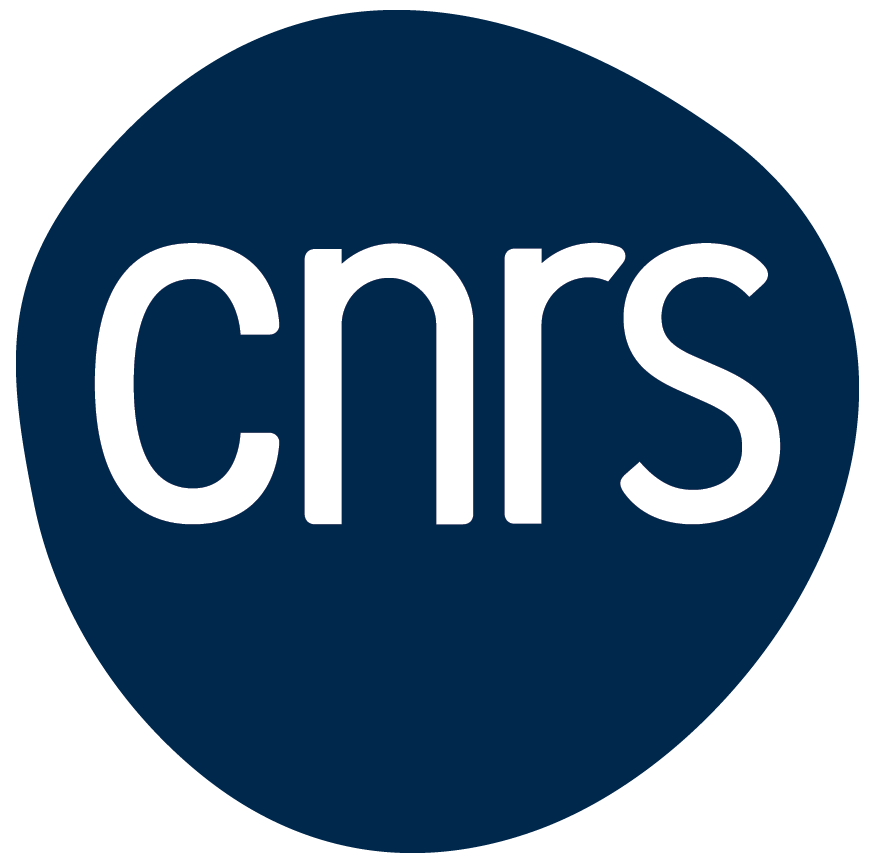Symposium Alfred Kastler
The objective of the symposium is to review fields of physics and applications that have emerged and flourished worldwide from Kastler’s founding ideas.

Alfred Kastler was granted the Nobel Prize in Physics in 1966, 50 years ago, “for the discovery and development of optical methods for studying Hertzian resonances in atoms”. Laboratoire Kastler Brossel and his members are organising a series of events this year in Paris to celebrate the scientist and the man (http://alfredkastler.fr/), including a one-day scientific symposium on Thursday, December 1st 2016. The objective of the symposium is to review fields of physics and applications that have emerged and flourished worldwide from Kastler’s founding ideas.
Location
- Ecole Normale Supérieure – Salle Jean Jaurès – 29, rue d’Ulm – Paris 5e
How to attend ?
The Symposium will take place in the Jean Jaurès Conference Hall (243 seats). It will also be broadcast on the web. We kindly ask you to register. This way, we will be able to keep you informed on important facts about the symposium. There are no registration fees. To register simply click on How to attend/Registration on the left panel. You will be asked to log in to your CCSD (HAL) account if you have one, or to create such an account, prior to filling the registration form.
Program overview
The scientific heritage of Alfred Kastler’s work
- Antoine Heidmann, Director of Laboratoire Kastler Brossel
Scientific presentations by 7 invited speakers
- Dmitry Budker U. Mainz (RFA) / U.C. Berkeley (USA)
- Luiz Davidovich U. Rio (Brazil)
- Tilman Esslinger ETH Zurich (Switzerland)
- Dan Kleppner MIT Cambridge (USA)
- Pascale Senellart C2N – CNRS (France)
- Jim Wild U. Sheffield (UK)
- Jun Ye JILA Boulder (USA)
Memories of Kastler by

Copyright © Sveriges Television AB 2010
Read also
CNRS Recruitment – Join the LKB
External Recruitment for Researchers (M/F)
Nathan Goldman is among the Highly Cited Researchers
Clarivate list



